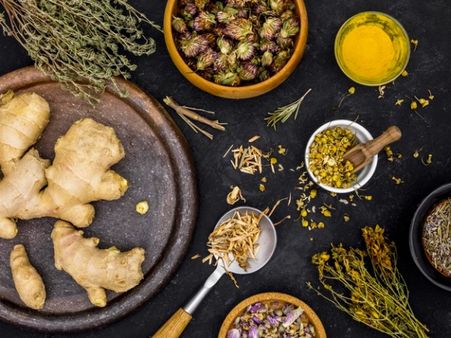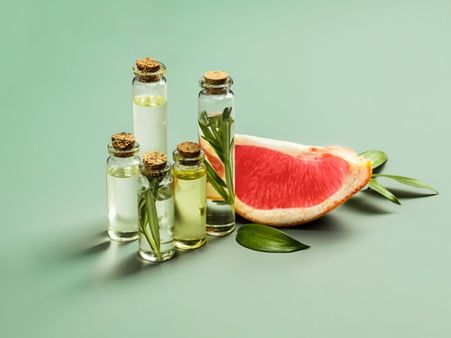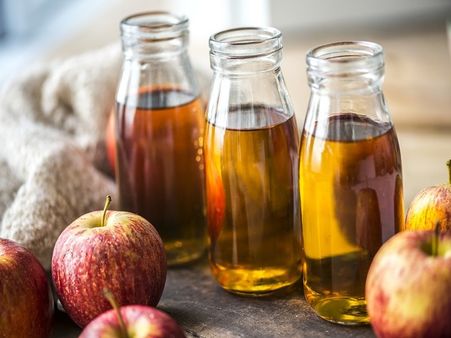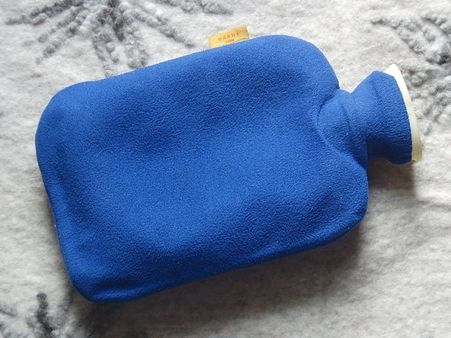Just In
- 22 min ago

- 1 hr ago

- 14 hrs ago

- 1 day ago

Don't Miss
- Movies
 Did Naga Chaitanya & Sobhita Dhulipala Getaway On A Holiday? Duo's Latest Posts Fuel The Fire; Details HERE
Did Naga Chaitanya & Sobhita Dhulipala Getaway On A Holiday? Duo's Latest Posts Fuel The Fire; Details HERE - Finance
 Apple To Scale Up Production In India, Plans 500,000 Jobs In Next Three Years
Apple To Scale Up Production In India, Plans 500,000 Jobs In Next Three Years - News
 Gangster Chhota Rajan's First Picture In 9 Years Out
Gangster Chhota Rajan's First Picture In 9 Years Out - Sports
 PAK vs NZ: Three reasons why Pakistan lost third T20I against second-string New Zealand in Rawalpindi
PAK vs NZ: Three reasons why Pakistan lost third T20I against second-string New Zealand in Rawalpindi - Technology
 Realme P Series Goes on Sale in India Today: Check Price, Specs, Offers
Realme P Series Goes on Sale in India Today: Check Price, Specs, Offers - Automobiles
 Hyundai Aura Achieves Remarkable 29% Sales Growth in March 2024, Becomes India's Second Best-Selling Sedan
Hyundai Aura Achieves Remarkable 29% Sales Growth in March 2024, Becomes India's Second Best-Selling Sedan - Education
 Top MBA Programs at Premier Institutes for Enhancing Your Business Acumen
Top MBA Programs at Premier Institutes for Enhancing Your Business Acumen - Travel
 Journey From Delhi To Ooty: Top Transport Options And Attractions
Journey From Delhi To Ooty: Top Transport Options And Attractions
Ginger, Basil Tea, Clove Steaming And 31 Other Home Remedies For Headache
Headaches can be a real pain in the neck, and we mean literally! Waking up with a headache can make any good day feel worse. One of the most common disorders affecting the nervous system, almost half of the global adult population is affected by headache. Be it a sudden throb or a constant pain; headaches can be quite agonizing and make it difficult for you to function normally.
In this article, Boldsky will tell you about some of the most effective home remedies for headache, that can help soothe pain, prevent the onset of a headache and provide relief from the associated symptoms of headache such as neck pain, back pain etc.

Read on to know about the most effective home remedies for headache.

I. Spices For Headache
1. Ginger: Ginger contains powerful anti-inflammatory and antioxidant properties. It contains a substance called gingerol, which has powerful medicinal properties. Touted as a medicine for headaches, ginger is a perfect home remedy that will reduce inflammation of the blood vessels in the head, hence relieving you from the pain [1].
How to: Steep ginger root in boiling water or mix equal parts of lemon juice and ginger juice. Drink this mixture once or twice a day.
2. Pepper: It can help relieve nasal congestion by thinning the mucous. Sprinkle pepper powder on your food or make its tea. Pepper contains a substance called capsaicin which can help get relief from a throbbing headache [2].
How to: You can add pepper to your food or to your coffee to gain the benefits and get relief from headaches.
3. Cinnamon: Cinnamon is a healthy spice that is rich in antioxidants, protects heart health, contains anti-inflammatory properties, and can effectively treat headaches.
How to: Grind some cinnamon sticks and add some water to it to make it into a thick paste. Apply it on your forehead and lie down for 30 minutes. Wash it off with lukewarm water.

...
4. Cayenne pepper: Cayenne contains an ingredient called capsaicin. This inhibits the main element of pain perception in the body called Substance P. Substance P is what makes us feel the pain and capsaicin masks it, thereby reducing the headache pain [3].
How to: Dilute ¼th spoon of cayenne powder in 4 ounces of warm water. Soak a cotton swab in the solution and moist the swab gently in the inside of your nostril.
Caution: Be careful of nostril burning, so make sure to use only a very small amount of the spice.
5. Garlic: Garlic can help cure a common cold an even headache related to cold. It has antibacterial and antiviral properties and also helps relieve congestion, thereby reducing the pain related to headache [4].
How to: Boil three crushed cloves of garlic and add two teaspoons of honey and one tablespoon of lemon. Drink it two times a day.
6. Turmeric: Turmeric has been used for headaches and migraine due to its antioxidant and anti-inflammatory properties. Drinking turmeric milk or golden milk has been shown to help reduce headaches. Turmeric milk will give you much relief from congestion as well [5].
How to: Boil a glass of milk and add one teaspoon of turmeric to it. Drink it three times a day to relieve headache and body ache associated with cold.

II. Herbs For Headache
7. Cloves: Cloves can be used as a home remedy for curing throbbing headaches due to its cooling and pain-relieving properties. Cloves also have other benefits like aiding in digestion and boosting the immune system [6].
How to: Add 2 drops of clove oil in a tablespoon of coconut oil and sea salt. Gently massage your forehead and temples with it.
8. Basil leaves: A strong-scented herb, basil leaves are used for natural headache treatment and has many analgesic benefits too. The oil of the basil leaves acts as a muscle relaxant and helps get rid of the headaches caused by tension [7].
How to: Add 4 basil leaves in a cup of boiling water and let it simmer. Add a drop of honey to the tea. Mix it well and drink it hot.
9. Mint leaves: Mint leaves have menthol and menthone in them, which have a cooling effect that can help manage the headache pain.
How to: grind some mint leaves into a paste and apply this over your forehead and temples whenever you get a nasty headache and leave it on for 10-15 minutes.
10. Tulsi leaves: This is the common Tulsi you can find in almost every Indian home and while it belongs to the same family as basil, tulsi and basil are two different plants. However, tulsi too can help you provide relief from headaches [8].
How to: Simply pull out a handful of tulsi leaves, boil it in water, and then inhale the steam for immediate relief.
11. Kudzu extract: Kudzu extract is a botanical supplement that comes from the vine kudzu, which is known to be effective for cluster headaches. A study in 2009 reported that people who used kudzu extract for treating cluster headaches helped in decreasing the frequency, duration and intensity of headache attacks [9].

III. Essential Oils For Headache
12. Peppermint oil: Peppermint helps to open the clogged blood vessels, which causes headaches. It consists of menthol which aids in regulating blood flow in the body and help relieve the pain [10].
How to: Mix 3 drops of peppermint oil in 1 tablespoon of almond oil. Massage the temples or the back of your neck with it. You can also apply crushed peppermint leaves on your forehead.
13. Lavender oil: The fragrance of lavender oil has been proven to help reduce headaches. It also improves brain function, improves sleep, heals wounds, restores skin complexion, protects against diabetes symptoms and relieves pain [11].
How to: You can add 2 drops of lavender oil to two cups of boiling water and inhale the steam. You can also mix 3 tablespoons of peppermint oil, almond oil or olive oil. Massage your head with it.
14. Rosemary oil: This essential oil helps in treating headaches and cures them instantly. Apart from curing headaches, it promotes hair growth, improves memory, detoxifies the liver, lowers cortisol and promotes gallbladder function [12].
How to: Dab a drop of rosemary oil on each of the temples and the forehead. Gently rub into the skin. Keep it for several minutes and you may wash it off.
15. Eucalyptus oil and banana peel: This home remedy is something that has been criticised by some while many assure it to be an effective remedy for headaches. Banana peel has a natural cooling effect and is also loaded with potassium content, so it can be extremely beneficial in reducing inflammation present in the head region, thus reducing headaches. Besides, eucalyptus oil also comes with anti-inflammatory properties that can reduce pain and soothe your nerves [13][14].
How to: Rub a few drops of eucalyptus oil on your forehead. Now, place a banana peel on the same area, with the inner part of the peel resting on your forehead. Let it remain for about 20-30 minutes. Lie down and take in deep breaths slowly for those 30 minutes.

IV. Teas For Headache
16. Feverfew tea: Headaches, particularly migraines, can be cured with feverfew plant. When a migraine is in effect, then the blood vessels in the head will be expanding and pressing on the nerves. Feverfew helps in relaxing and constricting the blood vessels, thus easing the pain that is induced by the pressure [15]. It also contains a substance called parthenolide that reduces inflammation and pain. Its effects have been like aspirin but without any side effects [16].
How to: Pour 1 cup of boiling water over dried feverfew leaves, steep for 30 minutes or so and drink it.
Caution: Feverfew tea might cause mouth irritation, so ensure that you use more water and fewer leaves.
17. Ginger tea: Ginger tea is considered an effective herbal tea for headaches and migraines. A study found the ginger root to be effective as sumatriptan, a common medication to reduce migraine pain.
How to: Add 1 tablespoon of grated ginger into 3 cups of boiling water. Add lemon and simmer for 10 minutes. Drink it warm.
Caution: If you are having a gallbladder condition or taking blood thinners, speak to your doctor first before having ginger tea.
18. Chamomile tea: The chamomile flowers contain several phenolic compounds, mainly the flavonoids apigenin, luteolin, glucosides, quercetin and patuletin. All of these has anti-inflammatory properties which is the reason chamomile tea is a great pain reliever for migraine headaches and tension headaches [17].
How to: Add 3-4 tablespoons of chamomile into your teacup. Pour boiling water over it. Let it steep for 5 minutes and drink it.
19. Peppermint tea: Peppermint has a calming effect on the body which can bring relief from a headache, anxiety-related disorders and stomach problems. It contains menthol and methyl salicylate, both of which have antispasmodic effects.
How to: Crush 7-10 peppermint leaves and put them into your teacup. Add boiling water over it and allow it to steep for 10 minutes. Remove the leaves and add honey. Enjoy the drink.
20. Clove tea: Clove is another valuable spice that has been used for centuries to treat various types of pain, including headaches. It is because of the antinociceptive properties of clove which block or lower the pain.
How to: Add a teaspoon of ground cloves in a cup of boiling water. Allow it to steep for 10 minutes and enjoy the drink.

...
21. Lemon balm tea: Lemon balm is a calming herb and it's known for its pain-relieving and mild sedative properties. If your headache is due to stress, the relaxing properties of lemon balm can unwind, de-stress and relax your muscles [18].
How to: Heat water and add the chopped lemon balm leaves. Mix it in the water and allow it to steep for 10 minutes. Strain and add honey to it.
22. Willow bark tea: The bark of the willow tree has healing properties which are why it is used as a treatment for fever and brings relief from headache and joint pain. Willow bark contains an active ingredient called salicin, which is similar to the pain-relieving medication aspirin [19].
How to: Take 4 tablespoons of dried flakes of willow bark and add in a cup of boiling water. Simmer for 6 minutes and strain it
Caution: The willow bark tree might irritate your stomach lining. Consult a doctor before having it.
23. Meadowsweet tea: Meadowsweet is a plant used for treating colds, upset stomach, bronchitis, heartburn, peptic ulcer, and joint disorders. It also helps to relieve headaches due to the compound salicin present in it [20].
How to: In a cup of boiled water, steep 1-2 teaspoons of dried meadowsweet flowers for 10 minutes. Strain it, add a dash of honey and drink it.

...
24. Wintergreen tea: Wintergreen is another shrub used for treating aches and pains. It contains an aspirin-like chemical called methyl salicylate which can help alleviate the headaches [21].
How to: Pour boiling water in a cup and add half a teaspoon of dried wintergreen leaves. Let it steep for 3 minutes and strain it.
25. Tulsi tea: Tulsi is an aromatic perennial shrub which has been used in Ayurveda for medicinal purposes. The freshly brewed tea made from tulsi is beneficial in treating headache, migraine and other stress-related headaches.
How to: In a cup of boiling water, add shredded tulsi leaves, ginger, cardamom powder. Boil it for 10 minutes and strain it. Add honey and lemon juice for taste.
26. Rosemary-sage herbal tea: Make a herbal tea by mixing rosemary and sage leaves. The combination of the two herbs can help relieve the headache.
How to: Crush the leaves and add it to the boiling water. Cover it properly and let it cool down at room temperature. Drink this herbal tea at least 3-4 times a day when you feel a headache coming.
27. Cinnamon and cardamom tea: This is a special tea called 'kehwa' and is one of the best remedies for cold and headache.
How to: Boil a cup of water and add one clove of cinnamon, three cloves of cardamom, few crushed almonds, sugar to taste and a pinch of saffron. Boil for 20 minutes and drink it three times a day [22].

V. Other Home Remedies For Headache
28. Apple cider vinegar: Apple cider vinegar and apples, both can be used against fighting off a headache. It helps in restoring the acid-alkaline balance in the body [23]. Apple cider vinegar has a lot of benefits from helping in weight loss, reducing cholesterol, lowering blood sugar levels to improving symptoms of diabetes [24].
How to: Pour ¼th cup of apple cider vinegar in a bowl. Place a towel over your head, trapping the steam over your face. Do this for 5-10 minutes, as the water starts to cool down, start breathing in and out deeply.
29. Ice pack: Applying an ice pack on the back of your neck can provide relief from a headache. Because the ice helps reduce inflammation that contributes to headaches and it has a numbing effect on the pain [25].
How to: Use a washcloth dipped in icy cold water and place it over your head for 5 minutes. Repeat this process several times for relief.
30. Sandalwood: Applying sandalwood paste on your forehead can stimulate your attention and will help to focus better. The cooling properties in sandalwood have a significant effect on your body and mind [26].
How to: Make a smooth paste using 1 tablespoon of sandalwood powder and 1 tablespoon of water. Apply the paste on your forehead and temples. Let it dry for 15 to 20 minutes. Wash it off with cold water.

...
31. Stretching: One of the best ways to manage tension headaches (caused by fatigue and muscle tension) is by stretching your muscles. So, if your head is pounding away at the temples, do these following exercises for at least 10 - 15 minutes, and you should see some positive results [27].
How to:
Neck stretches: First, stretch your neck to the left. Hold it for 5 seconds. And then relax by coming back to the neutral position and staying there for 5 seconds. Repeat for the right side. Then up and then down. Keep switching sides and stretch. And do not forget to relax in between each turn. You can even rotate your neck slowly. First in one direction, and then the other with relaxing periods in between.
Shoulder shrugs: Lift your shoulders. Hold it for 5 seconds. Then relax for 5 seconds. Repeat by pushing it down so you can feel the stretch all along your neck and shoulder. Relax. Then push it forward. And then repeat by pushing them back. Make sure you relax between each switch.

...
32. Hot compress: The kind of compress treatment that you must go in for differs from a person to person. What clears up for one person may not do so for another. Some headaches are caused by expanded blood vessels pressing on the nerves. For some people, applying something warm to the area will help clear it up [28].
How to: Hot compress can be carried out with a towel soaked in warm water.
33. Breathing exercise: Make it a point to sit comfortably. Slowly try to close your eyes, concentrate and then take a deep breath till the time you feel the air in your stomach. Then slowly breathe out and then relax. Do this for about 10 times. You will feel relaxed. This not just helps in getting rid of the headache but also helps to prevent it [29].
34. Muscle-relaxing exercise: Slightly rotate your head side-ways then in circular ways. Then roll your shoulder forward and backwards. Do this ten times each. This helps in relaxing the muscles and thereby help in getting rid of headaches [30].

On A Final Note…
There are various ways to prevent headache. Taking a pain reliever, drinking plenty of water, having a cup of coffee, cold compress, massaging your scalp and practising relaxation techniques are a few of the ways to treat primary headaches. But secondary headaches can be treated only with proper medical attention to get a good prognosis.
For most of us, an occasional headache is nothing more than a temporary speed bump on a busy day. However, it is crucial that you seek medical advice if you have constant bouts of headaches, and adopt a healthy lifestyle, incorporating a healthy diet and exercise.
-
 beautyTaming The Frizz: 5 Home Remedies For Silky, Smooth Hairtip
beautyTaming The Frizz: 5 Home Remedies For Silky, Smooth Hairtip -
 beautyBeauty In A Jar: Can You Make Anti-Ageing Collagen Powder At Home?
beautyBeauty In A Jar: Can You Make Anti-Ageing Collagen Powder At Home? -
 beautyPrevent Painful Underarm Pimples With These Home Remedies
beautyPrevent Painful Underarm Pimples With These Home Remedies -
 wellness5 Bizarre Home Remedies For Pain Relief: Read It To Believe It!
wellness5 Bizarre Home Remedies For Pain Relief: Read It To Believe It! -
 beautyLighten Up Your Inner Thighs Naturally: 4 Home Remedies
beautyLighten Up Your Inner Thighs Naturally: 4 Home Remedies -
 beautyHome Remedies For Chin Pimples: Get Rid Of Pimples Naturally
beautyHome Remedies For Chin Pimples: Get Rid Of Pimples Naturally -
 health7 Effective Home Remedies For Kidney Disease: Foods, Detox Tea, Juice, And More
health7 Effective Home Remedies For Kidney Disease: Foods, Detox Tea, Juice, And More -
 beautyThis Natural Ingredient Can Do More Harm Than Good On Your Skin, Especially Oily Skin
beautyThis Natural Ingredient Can Do More Harm Than Good On Your Skin, Especially Oily Skin -
 beautySay Goodbye to Under Eye Bags in 10 Minutes: A Quick Beauty Hack You Can Try Anywhere!
beautySay Goodbye to Under Eye Bags in 10 Minutes: A Quick Beauty Hack You Can Try Anywhere! -
 healthFresh And Confident, All Day Long! How To Make Your Sweat Smell Better?
healthFresh And Confident, All Day Long! How To Make Your Sweat Smell Better? -
 beautyNaturally Beat Acne: The Honey and Cinnamon Mask You Need to Try
beautyNaturally Beat Acne: The Honey and Cinnamon Mask You Need to Try -
 beautyNatural Remedies For Hair Loss: Revive Your Hair With This 100-Year-Old Indian Recipe
beautyNatural Remedies For Hair Loss: Revive Your Hair With This 100-Year-Old Indian Recipe


 Click it and Unblock the Notifications
Click it and Unblock the Notifications



